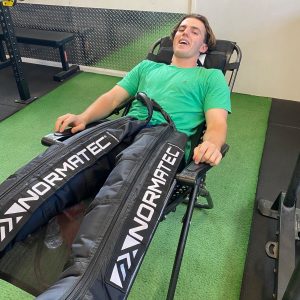Some coaches, athletes and other staff within the professional sport industry argue that optimising recovery can reduce the time in which athletes aren’t able to train (due to soreness and fatigue), thus allowing them to return to training quicker and enabling more volume of training each week. Such a demand for maximised recovery strategies has thus propelled research into the subject to skyrocket in popularity. However, there is still some conjecture around how to optimise an athlete’s post-exercise recovery. There are various types of recovery protocols which athletes can follow, however, they each provide differing results. These protocols also rely on the accessibility and availability of equipment. If athletes are to follow some of these recovery methods, they should consider these aforementioned factors. The main purpose of these recovery protocols is to dilate or constrict targeted blood vessels to promote the removal of waste biproducts from certain muscles post-exercise, with the aim of limiting perceptions of fatigue or soreness to allow an accelerated return to training and/or games.
Listed below are some common types of recovery protocols.
Cold and Hot Water Immersion Therapy (CWIT / HWIT):
CWIT and HWIT sees individuals immersing themselves in either hot (> 38OC) or cold (< 15OC) for roughly 10-25 minutes. Depths of immersion can vary, however, greater results have been observed in deeper levels of immersion. Hot/cold showers and ice baths are common practices for hot/cold hot water immersion.
Contrast Water Therapy (CWT):
CWT combines CWIT and HWIT by having athletes alternate between periods CWIT and HWIT. Similar temperatures apply to CWT however, the length of immersion is greatly reduced to approximately 1-2-minutes of 7-12 alternations. This method is common practice at professional sporting levels via hot and cold pools, however it can be replicated by changing the temperature of your shower every couple of minutes.
Compression Therapy (CT):
CT involves individuals wearing garments which apply compressive forces to muscles. There is no universal protocol for optimal use of compression garments, however, they should not overly restrict blood flow to the muscle and shouldn’t cause any pain. Compression sleeves which cover the arms or legs are most popular. Furthermore, there has been a recent rise in the popularity of pneumatic compression sleeves which can promote more optimal patterns of muscular compression to more quickly flush out waste biproducts from specific muscle groups.
Sleep
Sleep should not be overlooked as a recovery strategy. Whilst the previously listed methods promote physical recovery, sleep assists with mental recovery as well. 7-9-hours should be the target for most athletes; however, it is understood that everyday demands and certain lifestyle factors can impact on the amount of time and individual can sleep for. Trying to get more sleep each night will go a long way to enhancing one’s recovery after training and benefit them greatly over a long period of time.




